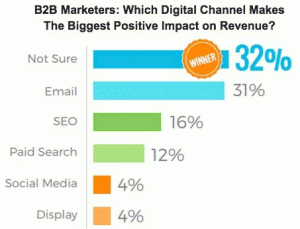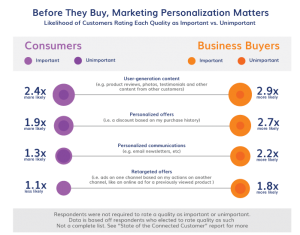If this past year has taught business owners anything, it is that search engine optimization (SEO) is a big deal. Perhaps more so, too, for local businesses. SEO is a great way to get more revenue at little to no cost, which makes it appealing to local businesses who may not be in a place to do large-scale digital marketing campaigns.
Now that everyone is focusing on their digital storefronts, beneficial local SEO ranking factors are becoming common knowledge. What isn’t as widely known, however, are local SEO ranking red flags that may be pushing you down in search engine result pages (SERP).
These seven factors could be hurting your local search ranking, without you even knowing it.
Don’t worry! Once you identify the factors that are hurting you, it is easy to pivot your strategy to better results and increase your search engine ranking.
1. Your Google My Business listing has incomplete or inaccurate information.
The primary goal of a Google My Business (GMB) listing is to reach potential customers. Proper listings give users all of the tools they need to locate and contact a business. This includes business hours (so customers know when to go), an accurate business location, contact information, proper attributes like parking information, and both interior and exterior photos. The latter is important to show customers what to expect. If visitors know exactly what they’ll be looking for and walking into, they’re more likely to shop.
Think of your business as a party. A GMB listing is the invitation. Receiving an invitation is great, but if there is no address, way to RSVP, or information on what to wear or bring, you’d be much less likely to attend.
If you’re not ranking well in search engine results, especially Google Maps, be sure to review your listing(s) to make sure they all have complete information.
2. You haven’t posted any new Google My Business photos or updates recently.
Google loves engagement. The algorithms tend to promote listings that show engagement in two ways. The first is that they share photos and posts that engage users (aka potential customers). Frequent posts and photos add a highlight to GMB listings, which prompts users to interact with a business.
The other way Google looks at this is as the business owner being engaged simultaneously by creating the content for customers. By posting an original photo and text-based post each week, business owners can show search engines and users that they are active, engaged, and ready to do business.
If, while reading this, you realize you haven’t shared anything new to your listing in a while, be sure to read up on how to optimize your GMB listing posts and the best practices for business photos.
3. You have recently made changes to your website content (this includes titles and meta descriptions).
Say you’ve recently found a new keyword or keywords that relate to your business. Feeling inspired and ready to reach a new branch of your target market, you get to work on your website, updating everything from old blog posts to the meta descriptions of main pages in order to take advantage of these new keywords. Suddenly you realize that your search engine ranking has dropped.
Don’t despair. If you’ve recently updated any text-based content on your website, it may take search engines some time to crawl and re-rank you in the appropriate way. Wait it out. If nothing changes in a few months, the next step would be to review other things that may be hurting your ranking.
4. Google has recently made an update to its ranking algorithm.
Sometimes local search rankings change, regardless of anything other than changes in Google’s algorithm. Think of it like this: If you made a list of the most popular shows to stream on Netflix in 2011, ten years later the general consensus will be very different. As time goes on, you’ll need to update your content to keep it fresh and on-trend. The same goes for your digital and local search strategy.
Keeping up with Google news is a great way to stay ahead of the curve, especially as the Google Core Algorithm updates roll out.
5. Multiple business locations have the same content.
One of the responsibilities that comes with having multiple business locations is in the digital realm. And failing to treat separate location listings, or websites, as unique storefronts may be the mistake you’ve been overlooking.
6. Your Google My Business Listing is set up with the wrong categories.
When setting up your GMB listing, you were asked to choose a category that best represented your business. Thinking you knew your business better than anyone else, you may have inadvertently chosen the wrong category or too many categories.
If you’re finding it difficult to rank for your niche, review the primary category of your listing. Google considers the first category chosen to be the primary category.
When looking at your category, ask yourself:
- Is this how I would describe my business in conversation?
- Is my keyword strategy centered around this specific category wording?
- Is the category I have chosen specific enough?
7. There is a rise in local search competition for your niche
While this seems like a no-brainer, it is often forgotten amidst the overwhelm of checking to see your local search engine ranking has gone down. When wrapped up in the day-to-day of maintaining a business and all of the associated digital responsibilities, it’s easy to forget that there are many other businesses joining the game. And they are developing and refining their local SEO strategy alongside you.
Unfortunately, there is only so much share of local voice to go around. As more businesses are established, the competition increases. Instead of just hoping that the market stays stagnant, take this as an opportunity to get ahead.
What to do about SEO ranking changes
One of the best ways to stay competitive is to keep track of what is going on in your niche. You can do this in a number of ways, though some are easier than others.
One of the most convenient ways to check your local ranking frequently is by using a local SEO rank checker. These nifty tools save countless hours of searching in Incognito mode and making spreadsheets to keep track of your findings.
By checking, re-checking, and being patient so your new changes can have an impact on your local search ranking you can stay on top of the game and capitalize on the growth in the local search market.
Digital & Social Articles on Business 2 Community
(43)





